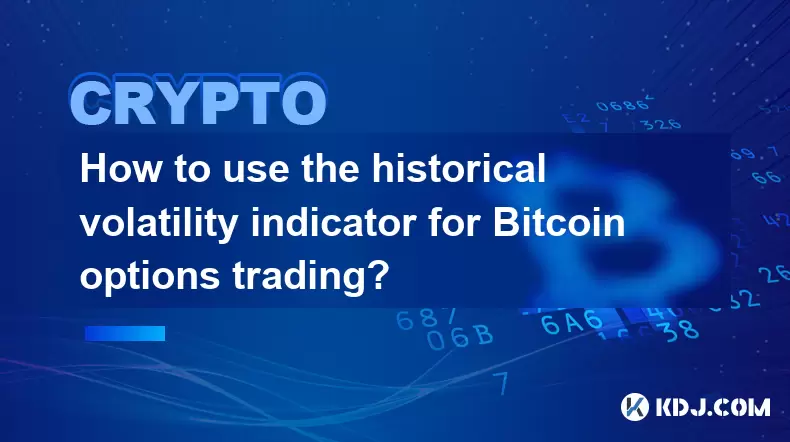-
 Bitcoin
Bitcoin $108,962.3544
0.69% -
 Ethereum
Ethereum $2,563.3189
1.78% -
 Tether USDt
Tether USDt $1.0003
0.00% -
 XRP
XRP $2.2768
2.22% -
 BNB
BNB $661.4562
0.97% -
 Solana
Solana $151.7146
2.47% -
 USDC
USDC $1.0000
0.00% -
 TRON
TRON $0.2847
0.18% -
 Dogecoin
Dogecoin $0.1713
4.43% -
 Cardano
Cardano $0.5848
1.78% -
 Hyperliquid
Hyperliquid $39.5345
-0.06% -
 Sui
Sui $2.9384
1.25% -
 Bitcoin Cash
Bitcoin Cash $492.0864
1.54% -
 Chainlink
Chainlink $13.4271
1.89% -
 UNUS SED LEO
UNUS SED LEO $9.0294
0.07% -
 Avalanche
Avalanche $18.1886
1.61% -
 Stellar
Stellar $0.2430
2.48% -
 Toncoin
Toncoin $2.9054
6.05% -
 Shiba Inu
Shiba Inu $0.0...01186
3.57% -
 Litecoin
Litecoin $88.0187
1.46% -
 Hedera
Hedera $0.1574
1.38% -
 Monero
Monero $315.1335
0.11% -
 Polkadot
Polkadot $3.3994
1.47% -
 Dai
Dai $1.0000
0.00% -
 Ethena USDe
Ethena USDe $1.0002
0.01% -
 Bitget Token
Bitget Token $4.4220
0.86% -
 Uniswap
Uniswap $7.4330
7.03% -
 Pepe
Pepe $0.0...01010
4.10% -
 Aave
Aave $277.8377
2.41% -
 Pi
Pi $0.4572
-0.22%
Why does the price of Bitcoin fluctuate so much? What are the factors that affect its price?
Bitcoin's price fluctuations are driven by supply and demand, media sentiment, macroeconomic factors, technological developments, speculation, regulation, and market manipulation.
Apr 27, 2025 at 03:42 pm

The price of Bitcoin, like any other asset, is subject to the forces of supply and demand. However, the reasons behind Bitcoin's price fluctuations are multifaceted and deeply rooted in its nature as a decentralized digital currency. Understanding these factors can help investors and enthusiasts navigate the often volatile cryptocurrency market.
Market Demand and Supply
At the core of Bitcoin's price volatility is the principle of supply and demand. Bitcoin has a fixed supply cap of 21 million coins, which means that once this limit is reached, no more Bitcoins will be created. This scarcity can drive up the price when demand increases. Conversely, if the demand for Bitcoin decreases, its price can plummet.
- Demand can be influenced by various factors such as media coverage, public sentiment, and the adoption rate by businesses and institutions.
- Supply is more predictable due to the fixed cap, but the rate at which new Bitcoins are mined and the number of Bitcoins lost or held long-term can still impact the circulating supply.
Media and Public Sentiment
The role of media and public sentiment in Bitcoin's price fluctuations cannot be overstated. Positive news, such as endorsements from influential figures or the adoption of Bitcoin by major companies, can lead to a surge in demand. Conversely, negative news, such as regulatory crackdowns or security breaches, can cause panic selling and a sharp decline in price.
- News about regulatory changes in major economies can significantly impact investor confidence.
- Social media platforms and online forums play a crucial role in shaping public sentiment, often leading to rapid price movements.
Macroeconomic Factors
Macroeconomic factors also play a significant role in Bitcoin's price volatility. Economic instability, inflation rates, and monetary policies can drive investors towards or away from Bitcoin as a hedge against traditional financial systems.
- During periods of economic uncertainty, investors may turn to Bitcoin as a safe haven, increasing its demand and price.
- Interest rates and inflation can affect the attractiveness of Bitcoin as an investment compared to other assets like stocks and bonds.
Technological Developments and Security
The technological developments within the Bitcoin network and the broader blockchain ecosystem can also influence its price. Improvements in scalability, security, and usability can increase its adoption and, consequently, its value.
- Security breaches or hacks of major exchanges can lead to a loss of trust and a subsequent drop in price.
- Upgrades to the Bitcoin protocol, such as the implementation of SegWit or the Lightning Network, can enhance its functionality and attract more users.
Speculation and Trading
Speculation and trading are perhaps the most immediate factors affecting Bitcoin's price. The cryptocurrency market is highly speculative, with traders often buying and selling based on short-term price movements rather than long-term fundamentals.
- Leveraged trading and margin trading can amplify price movements, leading to greater volatility.
- Whale movements, or large transactions by significant holders, can also cause sudden price shifts.
Regulatory Environment
The regulatory environment surrounding cryptocurrencies can have a profound impact on Bitcoin's price. Governments and financial regulators around the world have varying stances on Bitcoin, ranging from acceptance to outright bans.
- Regulatory clarity can provide a boost to Bitcoin's price by increasing investor confidence.
- Crackdowns or bans can lead to a sharp decline in demand and price.
Market Manipulation
While less discussed, market manipulation can also contribute to Bitcoin's price fluctuations. The cryptocurrency market is still relatively new and less regulated, making it susceptible to manipulative practices such as pump-and-dump schemes.
- Pump-and-dump schemes involve artificially inflating the price of Bitcoin before selling it off at a profit, leaving other investors with losses.
- Spoofing and other forms of market manipulation can create false signals that affect Bitcoin's price.
Frequently Asked Questions
Q: How does Bitcoin's halving affect its price?
A: Bitcoin's halving events, which occur approximately every four years, reduce the reward for mining new blocks by half. This reduction in the rate of new Bitcoin creation can lead to a decrease in supply, potentially driving up the price if demand remains constant or increases. However, the impact of halving on price is often debated and can be influenced by other market factors.
Q: Can Bitcoin's price be predicted accurately?
A: Predicting Bitcoin's price with accuracy is extremely challenging due to the multitude of factors influencing it. While some analysts use technical analysis and market indicators to make forecasts, the cryptocurrency market's inherent volatility and susceptibility to external influences make precise predictions difficult.
Q: How does the global adoption of Bitcoin impact its price?
A: Global adoption of Bitcoin can significantly impact its price. As more individuals, businesses, and institutions accept and use Bitcoin, demand increases, which can drive up its price. Conversely, if adoption stalls or declines, the price may fall due to reduced demand.
Q: What role do institutional investors play in Bitcoin's price movements?
A: Institutional investors, such as hedge funds and asset managers, can have a substantial impact on Bitcoin's price. Their large-scale investments can drive up demand and price. Additionally, their involvement can increase market liquidity and stability, although it can also lead to increased volatility during periods of significant buying or selling.
Disclaimer:info@kdj.com
The information provided is not trading advice. kdj.com does not assume any responsibility for any investments made based on the information provided in this article. Cryptocurrencies are highly volatile and it is highly recommended that you invest with caution after thorough research!
If you believe that the content used on this website infringes your copyright, please contact us immediately (info@kdj.com) and we will delete it promptly.
- Litecoin Breakout Watch: What Traders Need to Know Now
- 2025-07-06 16:50:13
- Bitcoin, Solana, Ethereum: Decoding the Latest Buzz on the Blockchain
- 2025-07-06 16:50:13
- Widnes Resident's 50p Could Be Your Ticket to Easy Street: Rare Coin Mania!
- 2025-07-06 16:55:13
- Bitcoin, Solaris Presale, and Token Rewards: What's the Buzz?
- 2025-07-06 16:55:13
- Ethereum Under Pressure: Price Drop Amid Global Uncertainties
- 2025-07-06 17:00:13
- XRP, SEC Case, and Prosperity: A New Era for XRP Holders?
- 2025-07-06 17:10:13
Related knowledge

What is the Woodies CCI indicator and can it be used for Bitcoin?
Jul 04,2025 at 05:14pm
Understanding the Woodies CCI IndicatorThe Woodies CCI indicator is a variation of the traditional Commodity Channel Index (CCI), which was originally developed by Donald Lambert. The standard CCI measures the current price level relative to an average price over a given period, typically 14. However, the Woodies version modifies this calculation to mak...

How to use indicators to trade the opening range breakout for Bitcoin CME futures?
Jul 05,2025 at 07:35pm
What Is the Opening Range Breakout Strategy?The opening range breakout (ORB) strategy is a popular trading technique used in both traditional markets and cryptocurrency futures, particularly for Bitcoin on the CME. This method involves identifying a specific price range formed during the early phase of a trading session and then taking positions when th...

What does a bearish cross on the Stochastic RSI mean for Bitcoin?
Jul 05,2025 at 07:18pm
Understanding the Stochastic RSI IndicatorThe Stochastic RSI (Relative Strength Index) is a momentum oscillator used in technical analysis to identify overbought or oversold conditions in an asset's price. It combines two well-known indicators — the RSI and the Stochastic Oscillator — to provide more nuanced signals than either could alone. The Stochast...

What are the limitations of using technical indicators for Bitcoin?
Jul 06,2025 at 03:35am
Understanding the Role of Technical Indicators in Cryptocurrency TradingIn the realm of Bitcoin trading, technical indicators are tools used by traders to analyze historical price data and volume to predict future price movements. These indicators—such as Moving Averages, Relative Strength Index (RSI), and MACD—are widely adopted across traditional fina...

How to use the historical volatility indicator for Bitcoin options trading?
Jul 06,2025 at 04:14am
Understanding the Historical Volatility IndicatorThe historical volatility indicator (HV) is a statistical measure used to assess the price fluctuations of an asset over a specific time period. In the context of Bitcoin options trading, this metric helps traders evaluate past price movements to anticipate potential future swings. Unlike implied volatili...

Best indicator for confirming chart patterns like head and shoulders on Bitcoin
Jul 06,2025 at 01:07pm
Understanding Chart Patterns in Cryptocurrency TradingIn the volatile world of Bitcoin trading, chart patterns serve as critical tools for identifying potential price movements. Among these, the head and shoulders pattern is one of the most reliable reversal indicators. Recognizing this formation requires not only visual identification but also confirma...

What is the Woodies CCI indicator and can it be used for Bitcoin?
Jul 04,2025 at 05:14pm
Understanding the Woodies CCI IndicatorThe Woodies CCI indicator is a variation of the traditional Commodity Channel Index (CCI), which was originally developed by Donald Lambert. The standard CCI measures the current price level relative to an average price over a given period, typically 14. However, the Woodies version modifies this calculation to mak...

How to use indicators to trade the opening range breakout for Bitcoin CME futures?
Jul 05,2025 at 07:35pm
What Is the Opening Range Breakout Strategy?The opening range breakout (ORB) strategy is a popular trading technique used in both traditional markets and cryptocurrency futures, particularly for Bitcoin on the CME. This method involves identifying a specific price range formed during the early phase of a trading session and then taking positions when th...

What does a bearish cross on the Stochastic RSI mean for Bitcoin?
Jul 05,2025 at 07:18pm
Understanding the Stochastic RSI IndicatorThe Stochastic RSI (Relative Strength Index) is a momentum oscillator used in technical analysis to identify overbought or oversold conditions in an asset's price. It combines two well-known indicators — the RSI and the Stochastic Oscillator — to provide more nuanced signals than either could alone. The Stochast...

What are the limitations of using technical indicators for Bitcoin?
Jul 06,2025 at 03:35am
Understanding the Role of Technical Indicators in Cryptocurrency TradingIn the realm of Bitcoin trading, technical indicators are tools used by traders to analyze historical price data and volume to predict future price movements. These indicators—such as Moving Averages, Relative Strength Index (RSI), and MACD—are widely adopted across traditional fina...

How to use the historical volatility indicator for Bitcoin options trading?
Jul 06,2025 at 04:14am
Understanding the Historical Volatility IndicatorThe historical volatility indicator (HV) is a statistical measure used to assess the price fluctuations of an asset over a specific time period. In the context of Bitcoin options trading, this metric helps traders evaluate past price movements to anticipate potential future swings. Unlike implied volatili...

Best indicator for confirming chart patterns like head and shoulders on Bitcoin
Jul 06,2025 at 01:07pm
Understanding Chart Patterns in Cryptocurrency TradingIn the volatile world of Bitcoin trading, chart patterns serve as critical tools for identifying potential price movements. Among these, the head and shoulders pattern is one of the most reliable reversal indicators. Recognizing this formation requires not only visual identification but also confirma...
See all articles

























































































